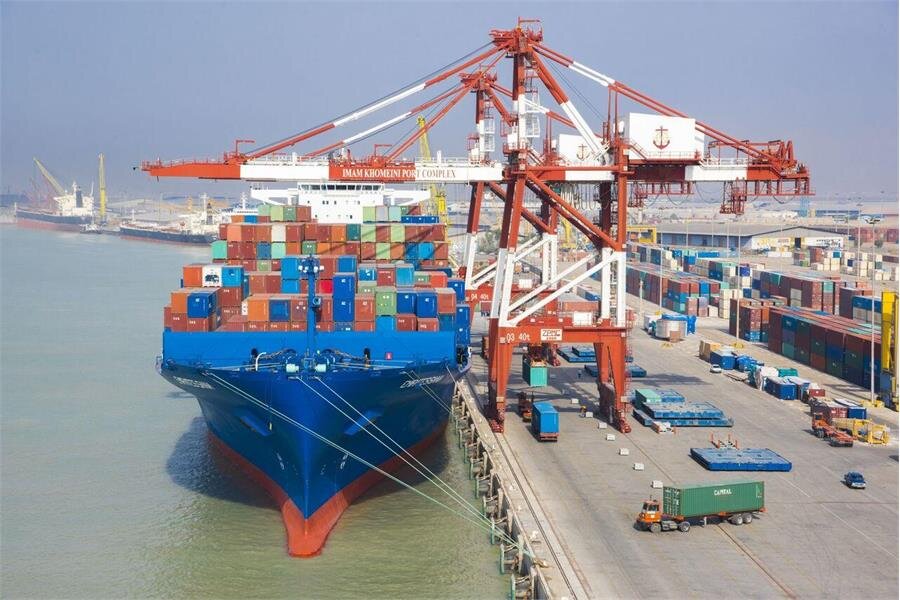The port of Imam Khomeini is strategically located in the province of Huzestan, located within Mashar district on the north coast of the Persian Gulf. The port is approximately 850km from Tehran and only 100km from Ahvaz, making it an important access point for both national and international logistics.
The port of Imam Khomeini is an important component of the country’s maritime infrastructure. The port is integrated into Iran’s network of international corridors and has strengthened its role as a major transportation and logistics centre. The PMO emphasizes the importance of ports as facilitators of the country’s economic development and international trade, particularly as facilitators of bulk, petrochemical and containerized cargo.
Features and Benefits
Multimodal connection
The port provides direct access to the national railway system and key transportation routes, promoting a seamless cargo movement in Iran and its neighbors. Proximity to Mahshahr Airport will further improve logistics efficiency.
Economic and Industrial Zones
Imam Khomeini Port benefits from legal facilities and incentives associated with special economic zones. It is adjacent to Iran’s largest petrochemical industrial economy, close to the ARVAND FROE industry & trade zone, supporting robust industrial and commercial activities.
Regional and International Trade Hubs
The port is located in an important transport corridor connecting Southeast Asia, the Persian Gulf, Iraq, Turkey, Central Asia, the Caucasus and Eastern Europe to Europe. This makes it a vital gateway for regional and international trade.
Port Infrastructure and Capacity
The Port of Imam Khomeini can accommodate vessels up to 150,000 tons and features a dedicated container terminal with an annual capacity of approximately 700,000 TEU. The port facilities also house the country’s largest grain terminals, thanks to transaction volumes with sophisticated machinery and technology for efficient port operations.
Various cargo processing
Imam Khomeini Port offers comprehensive cargo services including loading and unloading liquid and dry bulk cargo, petrochemicals, minerals, grains, general and containerized cargo. The port has a special terminal for containerized goods and grains. It includes cargo reservoirs, grain silos, liquid bulk and storage tank facilities for petrochemical products.
The port accounts for 34% of Iran’s total cargo and serves as the main transport point for goods moving between Central Asia, the Caucasus and Europe’s Iran and neighboring countries. Integration with National Rail and Road Networks strengthens its role as a logistics and distribution center.
Investment opportunities
Port facilities offer great potential for investment in sectors such as factory construction, power plants, warehouses, storage facilities, and service centers. Iran’s Ports and Maritime Organizations (PMOs) are actively supporting investors with clear measures, dedicated packages and regulatory guidance.
48m tonnes of cargo throughput
Ports Imam Khomeini reported total freight throughput of over 48 million tonnes in last year’s Iranian fiscal year (ends in March 2025), according to port authorities. Containerized cargo operations have processed 87,611 TEUs over the course of 12 months, with a significant increase of 87,611 TEUs, reflecting strong growth in port efficiency and container traffic. The port of Imam Khomeini also accounts for 70% of the total unloading, storage and distribution of Iran’s basic goods and is located as the country’s main logistics gateway for strategic imports.
MP/

